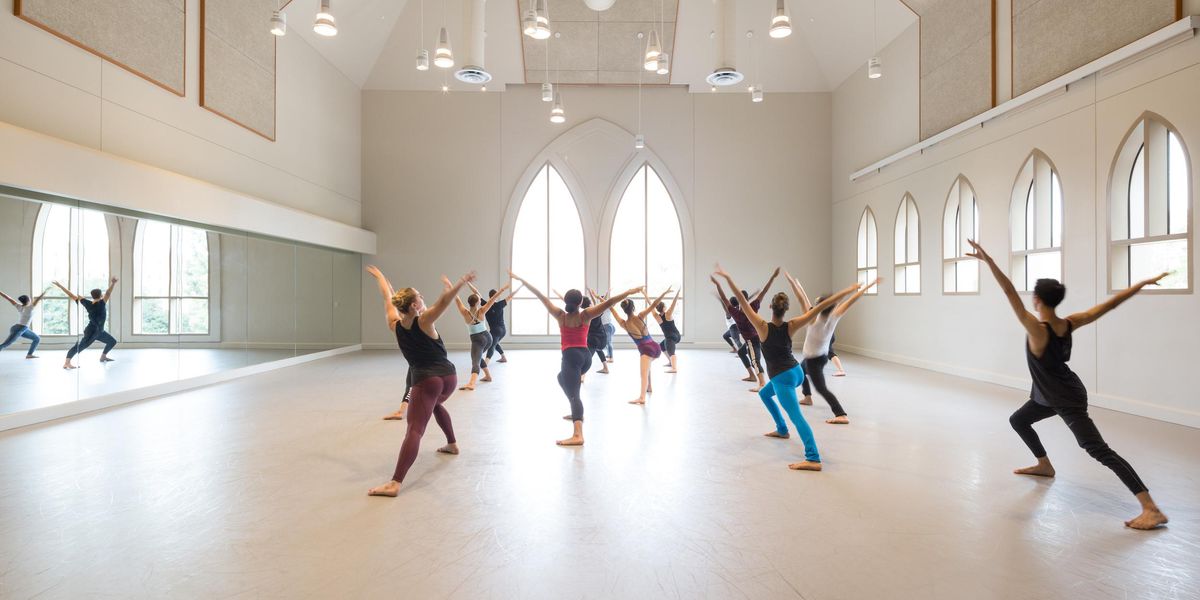Summer Study Guide 2011: Bound for Broadway
A star-studded week for future triple threats
The bass thuds in Studio 5, a black-box complete with wings and snazzy new marley, where 10 advanced students learn a hip hop routine to Mary J. Blige’s “The One.” Nick Kenkel (“25 to Watch,” p. 48), assistant choreographer of Legally Blonde on Broadway, leads the triple-threats-in-training through the high-energy combination, breaking down the complicated vocabulary. “You can’t walk up here,” he demonstrates, with mincing steps that make the kids crack up. “Use your plié.” He shows the opening walks again with attitude that would put Beyoncé and Missy Elliott (both of whom he’s danced with) to shame.
In the adjacent studio of Manhattan Movement & Arts Center, artistic director Catherine Cox coaches the younger group on solo songs. “It’s not just about the note,” Cox advises a singer learning to belt. The Tony Award–nominated Broadway veteran grabs her own stomach, uttering a sound from deep in her gut. “That joy’s gotta be internal.”
A Google search for “musical theater summer intensive” yields around 40 million results; choosing a triple threat program is by no means easy. If you’re a Broadway-bound dancer looking to gain confidence in singing and acting, the weeklong Broadway Triple Threat program (BTT) might be a perfect match. Cox loves working with strong dancers who arrive with “a certain raw material in singing and acting. They’ll add to their skill level and become more competitive in the real world.” Cox and her all-star faculty coach students in all three disciplines. They also provide a window into the realities of the industry—all in a friendly environment right in the heart of New York City.
Symbiosis & Support
Students Ashley Crimmins and James Ackermann were drawn to the BTT intensive because of its faculty. “We get to work with people that are in there now doing exactly what we want to do,” says 18-year-old Crimmins, from Colorado Springs, CO. With many years of dance training under their belts, she and Ackermann were the unofficial leaders of the dance portion of the intensive, pushing their more singing-oriented peers to excel in hip hop, jazz, tap, and musical theater movement classes. In singing and acting classes, the roles were reversed. Cox describes the students’ relationships as symbiotic. “They challenge each other.”
Personal attention can be rare in New York intensives. But at BTT, teacher-to-student ratio is important, says Cox. She aims to create a safe environment in which to experiment. “My strength is making the students realize that their strength is who they are. It’s always better to be idiosyncratically you than to be something you’ve seen before and are trying to copy.”
Unlike many programs that focus on ensemble pieces, BTT stresses all aspects of solo work: movement, monologues, and songs. “I’ve done a lot of other programs and this one by far has taught me the most,” says 17-year-old Ackermann, of Albuquerque, NM. “I needed to work on my singing and the theatrical part of dancing, and that’s what I learned here.” Based on their auditions, each of the 20 students (divided into two age groups: 13 to 15, and 16 and up) learns a piece selected for them by Cox. By the end of the week, everyone can add a suitable number to their audition repertoire.
Big City Exposure
In addition to its faculty, BTT also boasts master classes and Q&A sessions with guest artists currently active (and influential) in the industry. Students presented songs for Tom Kitt, Tony Award–winning composer of Next to Normal; performer Mandy Gonzalez of In the Heights and Wicked; and David Evans, associate conductor of Wicked. After strutting their stuff for Nora Brennan, the children’s casting director of Billy Elliot: The Musical, and gaining behind-the-scenes insight into the casting process, the students attended the Broadway show.
BTT’s Manhattan location makes access to such resources possible; it also immerses students in the New York vibe. For those with musical theater aspirations, says Cox, “New York City is it. The city has a particular energy that can be intoxicating or a big turnoff. It’s a good time to learn what that is.”
Celebrating Process
BTT culminates in a final showcase for family and friends. Throughout the week, students do mock auditions for faculty and guest artists. But come Friday, says Cox, the showcase is about “celebrating process,” not an industry audition.
Cox acknowledges that TV shows like So You Think You Can Dance are raising the bar for aspiring Broadway performers. When parents ask if their kids will become stars by the end of BTT, she tells them, “It’s a week. Be realistic and have respect for the arts.” Still, she manages to accomplish a lot within a short period of time. “You can find a glimmer of a belt, a glimmer of a time-step,” she says. “They’ll go back and study with a whole new awareness of what’s out there. In that week, I can get them inspired.”
Debbie Schneider dances and writes in NYC.
BTT students take class with Catherine Cox. Photo by David Evans, courtesy MMAC




